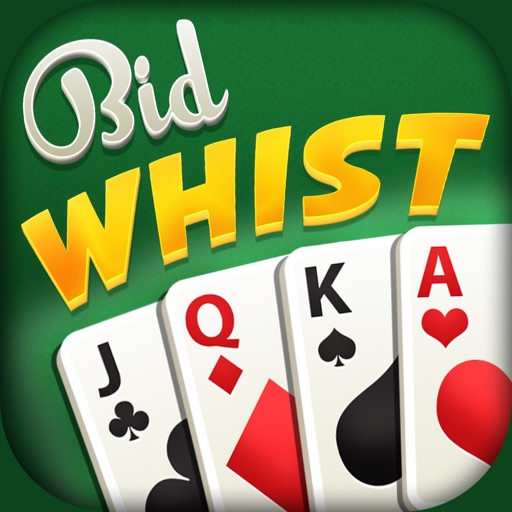

Each winning trick is kept by the player. Players must follow suit whenever possible. Players play tricks with the winning player leading the next.In phase 2, the game proceeds like a usual trick-taking game, with the same rules as the first phase.The player winning the final trick of Phase 1 will lead the first trick of Phase 2.The next top card is revealed and the process repeats until all 26 from the draw pile are removed. After each trick, the cards used in the trick are discarded and are not used in the remainder of the round.The leading player can choose to deliberately lose the trick by playing a low-rank card if the revealed top card is not desirable. The winning player takes the revealed top card of the draw pile, and the losing player takes the unrevealed 2 nd card of the draw pile.On each trick, the top 2 cards of the draw pile are at stake. The 1 st phase of Whist gives players the chance to improve their hands.The player winning the trick will lead the Suits by playing the trump suit, which outranks other cards. Playing the highest-ranked card will win the trick. Other trick-taking card games, where players can choose to forfeit rounds by The player who leads the trick determines the leading suit, and the Trick-taking involves each player plays aĬard. Of the draw pile is flipped over, and the suit of the revealed card will be the The remaining 26 cards are set aside to form the draw pile. The player drawing the higher card will be the The player reaching the point thresholdįirst across multiple rounds wins the game. The player winning the most tricks will win the round. In Whist, the aim is to win the most tricks in the 2 nd One of the most fruitful developments of Whist over the last two centuries has been the incorporation of a bidding process, whereby players undertake in advance to win a certain number of tricks.Figure 1. 7-8 is an Indian two-player game related to 3-2-5.Humbug was an 18th century British two-player Whist game.Another Two-Player Whist, based on Norwegian or Minnesota Whist.


Sergeant Major, 8-5-3, 9-5-2 - played in many countries.There is also a group of Whist games for three players, in which each player has a quota of tricks to fulfill. Arba'a Turub is a more distant relative, played in Somalia with 144 cards.Satat (a Whist-like game from Mauritius in which the 2 is the highest card).Omi (a 32-card whist-like game played in Sri Lanka).Hidden Rung - another Pakistani Rang variant in which the trump suit is chosen in secret and revealed during the play.Double Sir - a Pakistani variant of Rang in which tricks are only collected when two consecutive are won by the same player.Troefcall - a similar game played in Suriname, where there is a significant ethnic Indian community.Court Piece, also known as Rang or Seven Hands - a similar game played in India and Pakistan.Hokm - a Whist-like game from Iran, in which one of the players chooses trumps.Rússi - a whist game without trumps played in Iceland.Minnesota Whist or Norwegian Whist, played without trumps, the players choosing whether the object will be to win or to lose tricks.whist has trumps, an idea probably introduced from tarot - the earliest trick taking games would almost certainly have been without trumps.Ĭlassic Whist and its close relatives are for four players in fixed partnerships, partners sitting opposite.in the earliest games the king was highest and the ace (or one) was in its logical position next to the two - promotion above the king came later.Despite their apparent simplicity, these cannot be the oldest trick taking games because: The cards have their familar rank from ace (high) down to two (low). You just deal out the cards and play tricks. Games of this group form a good introduction to trick taking, as the rules are very straightforward.


 0 kommentar(er)
0 kommentar(er)
